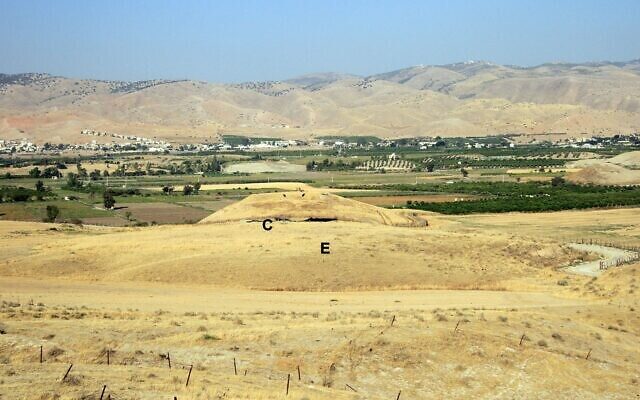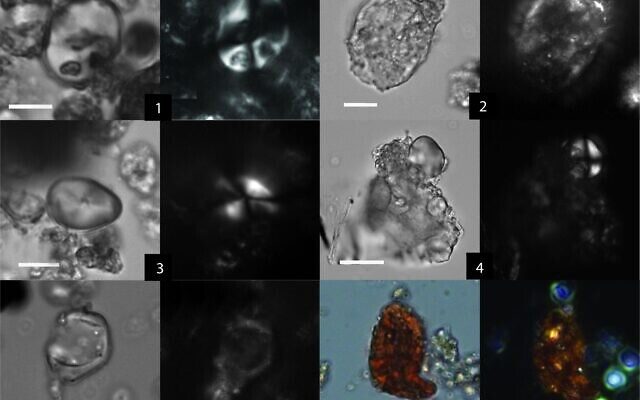
© University of HaifaA view of the archaeological site at Tel Tsaf, in the Jordan Valley
Israeli researchers say they have discovered the first evidence of social beer consumption within communities in the ancient Middle East, after finding the remains of cereal grains used to produce alcohol in a 7,000-year-old town.
Beer is known to have been used in ancient times for ceremonial and religious purposes, but the find is the earliest indication of social drinking in the Levant
prior to the widespread appearance of alcohol in the Bronze Age (circa 3300 BCE).
In the study, archaeologists from the University of Haifa
found starch residue from wheat and barley grains in ancient pottery at Tel Tsaf, located in the central Jordan Valley. The town dates back to the Chalcolithic era, from around 5000 BCE.
Studied under a microscope, the starch showed signs of a fermentation process, pointing to its use in alcohol production.
The university's Prof. Danny Rosenberg said the evidence for beer production joins "the evidence we've previously uncovered of Tel Tsaf's prosperity, expressed in its accumulation of agricultural produce, and particularly cereal, in large quantities."
He added: "We can imagine Tsaf's developing community holding largescale events in which large quantities of food and beer are consumed in a social context — and not just in a ceremonial context."
A previous 2014 study in which Rosenberg was also involved found evidence of beer production at a Natufian burial site located in Mount Carmel, from some 14,000 years ago. But in that case the beer was only apparently used as part of the burial rituals.Rosenberg said that beyond the 2014 and 2021 finds,
there had been scant evidence of beer consumption in the region prior to the Bronze Age.
Tel Tsaf is particularly interesting, Rosenberg said, as it is one of the only known communities in the region from the Chalcolithic era, a period of transition from agricultural societies living in tiny communities to those building larger cities.
© University of HaifaMicroscopic residue shows evidence of fermentation in ancient grains
He stressed that
beer production and consumption was likely continuous since the Natufian period, but that evidence for it is hard to come by due to the breakup of organic compounds over time.
"It's unknown at the moment whether the beer whose remnants we found in Tel Tsaf was produced on a regular basis or specifically for major social events," Rosenberg said.
"We hope that in the near future, when we can isolate further evidence of beer production at the site and at other sites, we will be able to better understand the role of alcohol in ancient societies, and particularly in those that — as in Tel Tsaf — were on the cusp of significant changes in their social structure as it became more and more complex."
So our ancient ancestors knew how to rave 🥳 🥳 🥳
No doubt it would have been preferable drinking alcohol based fluids, than dying because of drinking dirty water.